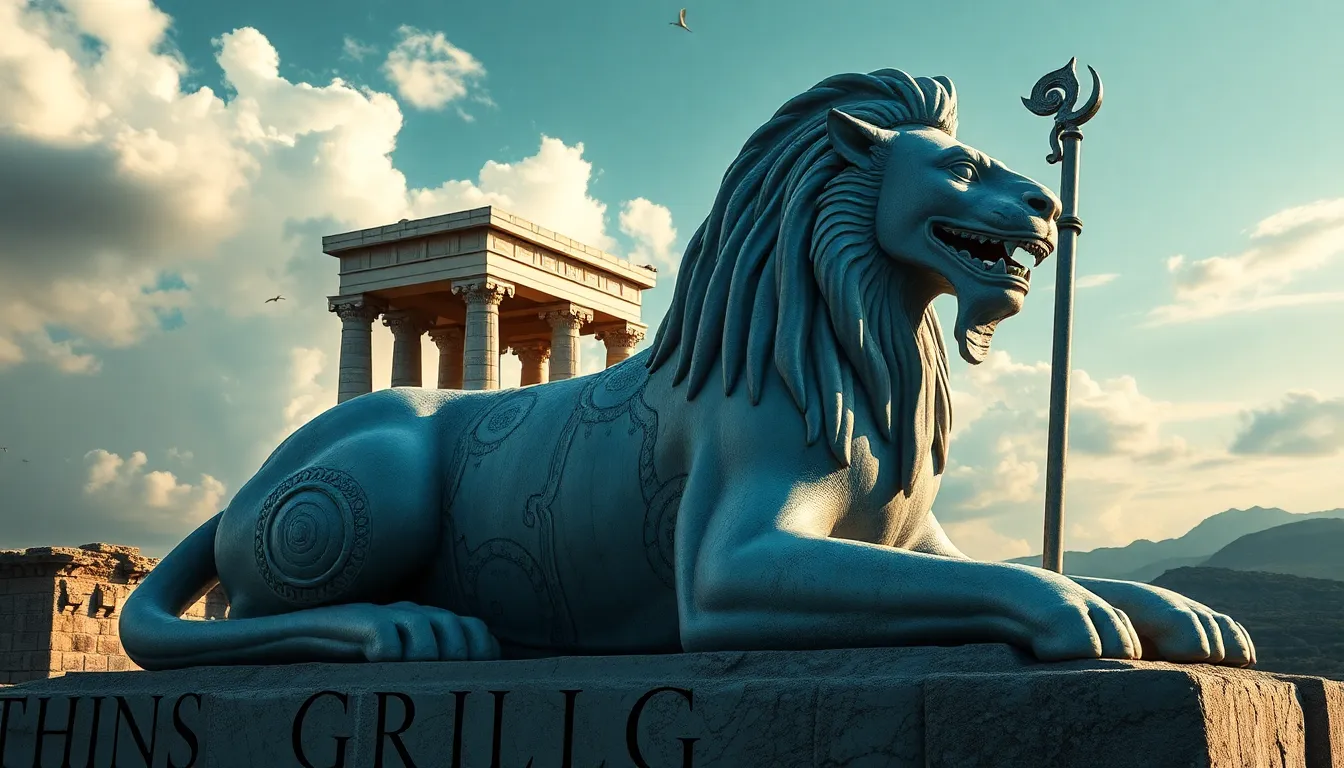The Sphinx and the Hero: Archetypes in Greek Mythology
I. Introduction
Archetypes play a crucial role in mythology, serving as universal symbols that embody fundamental human experiences. In Greek mythology, two of the most compelling archetypes are the Sphinx and the Hero. These figures not only reflect the cultural values of ancient Greece but also present timeless themes that resonate through generations.
The Sphinx, a mythical creature with the body of a lion and the head of a woman, is a guardian of mysteries and knowledge. In contrast, the Hero represents the ideal of bravery, strength, and the quest for truth. Understanding these archetypes provides insight into Greek culture, storytelling, and the human condition.
II. The Sphinx: Guardian of Mysteries
The Sphinx has its roots in ancient mythology, often depicted as a creature that poses riddles to travelers. Its name derives from the Greek verb “sphingein,” meaning “to squeeze” or “to strangle,” which reflects its nature as a harbinger of danger and mystery.
Symbolically, the Sphinx represents the threshold between knowledge and ignorance, challenging those who encounter it to confront their own understanding of the world. Its riddles serve as tests, determining whether an individual is worthy of passing into new realms of knowledge.
In the myth of Oedipus, the Sphinx plays a pivotal role. When Oedipus arrives in Thebes, he encounters the Sphinx, who has plagued the city with her riddle. The Sphinx’s challenge is a reflection of the broader themes of fate and knowledge that permeate the story.
III. The Hero Archetype in Greek Mythology
The hero archetype is characterized by several key traits: courage, strength, and a quest for truth. Heroes often embark on journeys that test their abilities and resolve, ultimately leading to personal growth and self-discovery.
Notable examples of heroes in Greek mythology include:
- Heracles: Known for his incredible strength and twelve labors that symbolize his struggle against chaos.
- Theseus: Celebrated for his cleverness and bravery, particularly in defeating the Minotaur.
- Perseus: Renowned for slaying Medusa and his adventurous quest to rescue Andromeda.
The hero’s journey often involves a call to adventure, challenges that must be overcome, and a return to the ordinary world transformed by the experience. This narrative structure is significant as it mirrors the struggles and aspirations of humanity.
IV. The Encounter: The Sphinx and the Hero
The relationship between the Sphinx and Oedipus is central to understanding their archetypal roles. When Oedipus confronts the Sphinx, he is not just facing a creature; he is confronting the very nature of fate and knowledge.
The Sphinx’s infamous riddle is: “What walks on four legs in the morning, two legs at noon, and three legs in the evening?” This riddle encapsulates the essence of human life, symbolizing the stages of existence. The implications of this riddle extend beyond mere words; it challenges Oedipus to reflect on the nature of humanity.
Oedipus’s triumph over the Sphinx, achieved through his clever answer—”Man”—not only liberates Thebes but also marks the beginning of his tragic journey. This encounter serves as a turning point, illustrating how knowledge can be both a source of power and a burden.
V. Themes of Knowledge and Ignorance
The Sphinx embodies the duality of knowledge and ignorance. As a guardian of secrets, she symbolizes the unknown, while her riddles represent the pursuit of wisdom. In contrast, the hero’s journey reflects a quest for knowledge and self-discovery.
The consequences of ignorance are profound in Greek mythology. Characters who fail to seek knowledge or who ignore warnings often meet tragic ends. This theme underscores the importance of wisdom and the peril of hubris.
VI. The Duality of Danger and Protection
The Sphinx serves as both a source of danger and a test for heroes. Her riddles pose a significant threat, yet they also offer an opportunity for growth. The challenge she presents forces heroes like Oedipus to confront their limitations and strive for greater understanding.
Conversely, the hero embodies the protective role in overcoming these challenges. Their triumphs often restore order and safety to their communities, illustrating the balance between chaos and order in mythology.
VII. Legacy of the Sphinx and Hero Archetypes
The influence of the Sphinx and hero archetypes extends far beyond ancient Greece, permeating literature and art throughout history. These figures have inspired countless works, from Oedipus Rex by Sophocles to modern retellings of heroic myths.
In contemporary storytelling, the Sphinx and hero archetypes continue to resonate. They appear in various forms, symbolizing the ongoing human struggle with knowledge, identity, and the quest for truth.
The relevance of these archetypes in modern culture reflects the enduring nature of human experience and the universal themes that connect us all.
VIII. Conclusion
In summary, the Sphinx and the Hero serve as powerful archetypes in Greek mythology that reflect fundamental aspects of the human experience. The Sphinx represents the challenges of knowledge and the mysteries of existence, while the Hero embodies the courage and determination to confront those challenges.
The significance of these archetypes extends beyond mythology, offering insights into the complexities of life and the ongoing quest for understanding. As we continue to explore Greek mythology, we uncover the timeless lessons these figures impart, inviting us to reflect on our own journeys and struggles.




